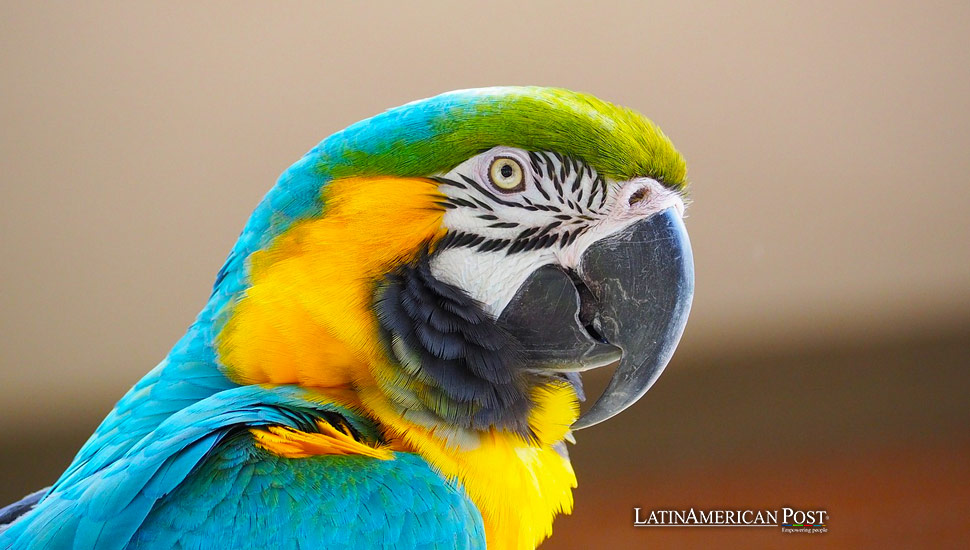Illegal Wildlife Trade Threatens Public Health Across Latin America

A recent UN report highlights the dire consequences of illegal wildlife trade, not just for biodiversity but also for global public health, revealing the risk of new diseases emerging from animal-to-human transmission.
The specter of emerging diseases transmitted from animals to humans looms large over global health, exacerbated by the unchecked illegal wildlife trade. The United Nations recently released its World Report on Crimes Against Wildlife, casting a harsh light on the multifaceted threats posed by these illicit activities. This report underscores the significant public health risks inherent in the wildlife trade—risks that have been starkly highlighted by the ongoing challenges of the COVID-19 pandemic, believed to have zoonotic origins.
In Latin America, a region replete with biodiverse ecosystems, the illegal wildlife trade undermines conservation efforts and poses unique health threats. The ease of global travel and commerce, while beneficial in many respects, has facilitated the growth of this illegal trade, thereby increasing the risk of zoonotic diseases—diseases that can jump from animals to humans with potentially devastating consequences.
Historical Context of Wildlife Trade in Latin America
The trade-in wildlife phenomenon has been around for a while in Latin America. Exotic animals have been captured and sold for centuries, a practice deeply intertwined with the region’s history. In the pre-Columbian era, indigenous tribes revered and utilized wildlife, often symbolically and sometimes as commodities. However, the arrival of European colonizers escalated the exploitation as animals became increasingly viewed as resources to be extracted for maximum profit.
Despite heightened awareness and strengthening of regulatory frameworks, illegal wildlife trade remains rampant in modern times. It thrives on the region’s expansive borders, challenging terrain, and often underfunded enforcement agencies. The lack of stringent controls and the high profitability of the trade attract organized crime groups, turning wildlife trafficking into a significant transnational issue.
The Health Implications of the Wildlife Trade
The UN report points to a troubling link between the wildlife trade and the spread of infectious diseases. It notes that diseases considered “priority” by the World Health Organization (WHO) have been detected in seizures of illegally traded animals. These diseases carry a high risk to public health due to their epidemic potential and insufficient countermeasures.
From 2011 to 2020, global seizure data revealed that traded species from 31 families of mammals, birds, and reptiles were associated with these priority diseases. The implications are clear: the illegal wildlife trade is not just a conservation issue but a direct threat to human health.
Latin America’s role in global health security is not just significant, it’s critical. Given its rich biodiversity, which includes numerous species that could harbor zoonotic pathogens, the region’s conservation efforts are of utmost importance. Habitat destruction, driven by deforestation and urban expansion, further exacerbates the risk by bringing humans closer to wildlife. It’s a delicate balance that needs to be maintained for the sake of our health and the health of our planet.
The International Union for Conservation of Nature’s 2022 analysis underscored that most emerging diseases are the result of human activities, including animal domestication and habitat disruption. The review pointed out that while the evidence of pathogens emerging specifically from the wildlife trade is limited, this could also reflect gaps in our understanding and surveillance.
Moving Forward: Addressing the Challenge
Addressing the challenge of the illegal wildlife trade requires a multifaceted approach. Strengthening international cooperation and enhancing enforcement mechanisms are crucial. Latin American countries need to invest in better surveillance and control systems at borders to prevent the bypassing of quarantine and other health measures designed to curb the risks associated with the wildlife trade.
Furthermore, global and regional cooperation is not just beneficial, it’s urgently needed to tackle the root causes of biodiversity loss and health risks. Initiatives like the CITES (Convention on International Trade in Endangered Species of Wild Fauna and Flora) need more robust support from governments worldwide, particularly those in biodiverse regions like Latin America. This is not a problem that can be solved by one country or one region alone. It requires a united front, a collective effort to protect our biodiversity and our health.
Also read: Brazil and Colombia Turning the Tide on Tropical Forest Deforestation
The UN’s report on wildlife crimes is a sad reminder of the intricate connections between our environment, the animals we share it with, and our health. As Latin America continues to fight against the illegal wildlife trade, the global community must recognize the broader implications of these activities. Only through concerted efforts can we hope to mitigate the dual threats to biodiversity and human health, safeguarding the planet for future generations.





